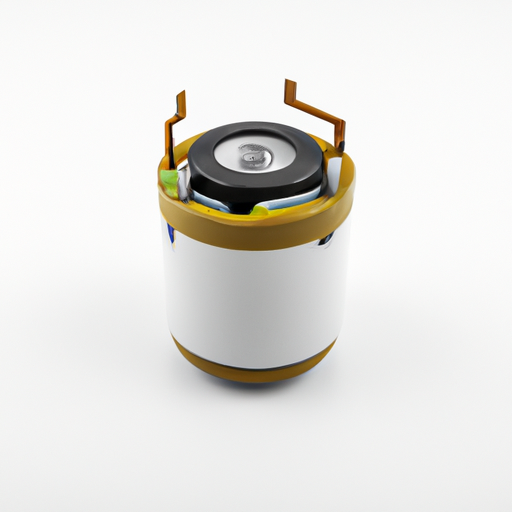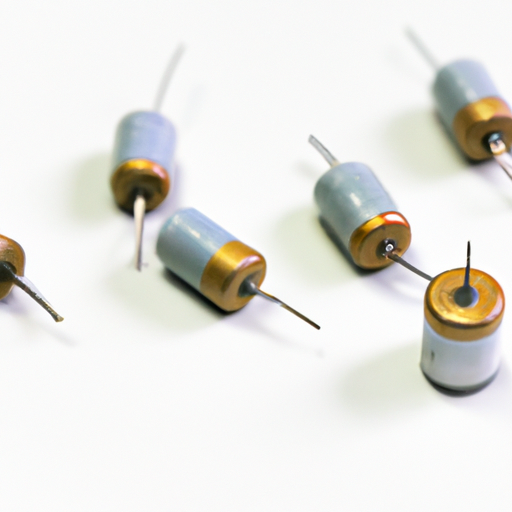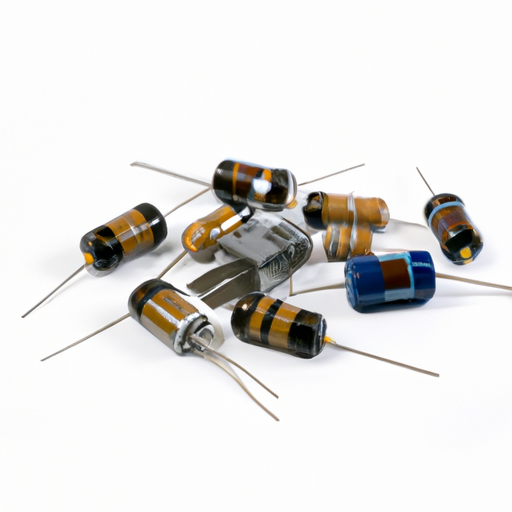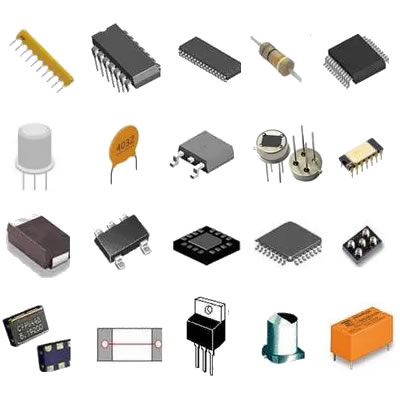What are the product features of capacitor banks?
What are the Product Features of Capacitor Banks?
I. Introduction
A. Definition of Capacitor Banks
Capacitor banks are assemblies of multiple capacitors that are connected together to store electrical energy and provide reactive power compensation in electrical systems. They play a crucial role in improving the efficiency and stability of power systems by managing voltage levels and reducing power losses.
B. Importance of Capacitor Banks in Electrical Systems
In modern electrical systems, capacitor banks are essential for maintaining power quality and reliability. They help mitigate issues such as voltage drops, power factor penalties, and harmonic distortions, which can lead to increased energy costs and equipment damage. By providing reactive power support, capacitor banks enhance the overall performance of electrical networks.
C. Purpose of the Article
This article aims to explore the key product features of capacitor banks, including their functionality, construction, control systems, safety features, and applications. Understanding these features is vital for selecting the right capacitor bank for specific needs and ensuring optimal performance in various electrical systems.
II. Overview of Capacitor Banks
A. Basic Functionality
1. Energy Storage
Capacitor banks store electrical energy in the form of an electric field. When connected to a power system, they can release this stored energy to support the system during peak demand periods or when there are fluctuations in voltage levels.
2. Reactive Power Compensation
One of the primary functions of capacitor banks is to provide reactive power compensation. Reactive power is necessary for maintaining voltage levels in AC power systems, and capacitor banks help supply this reactive power, thereby improving the power factor and reducing the need for additional generation capacity.
B. Types of Capacitor Banks
1. Fixed Capacitor Banks
Fixed capacitor banks consist of a set number of capacitors that are permanently connected to the electrical system. They provide a constant level of reactive power compensation and are typically used in applications where the load is stable.
2. Automatic Capacitor Banks
Automatic capacitor banks are equipped with control systems that allow them to adjust their output based on real-time load conditions. This flexibility makes them ideal for dynamic environments where load conditions frequently change.
3. Synchronous Capacitor Banks
Synchronous capacitor banks use synchronous machines to provide reactive power support. They can operate at varying power factors and are often used in large industrial applications where precise control of reactive power is required.
III. Key Product Features of Capacitor Banks
A. Electrical Characteristics
1. Voltage Rating
The voltage rating of a capacitor bank indicates the maximum voltage it can handle without failure. It is crucial to select a capacitor bank with a voltage rating that matches or exceeds the operating voltage of the electrical system.
2. Capacitance Value
The capacitance value, measured in farads, determines the amount of reactive power the capacitor bank can provide. This value should be chosen based on the specific reactive power requirements of the application.
3. Power Factor Improvement
Capacitor banks are designed to improve the power factor of electrical systems. A higher power factor indicates more efficient use of electrical power, leading to reduced energy costs and improved system performance.
B. Construction and Design
1. Material Quality
The materials used in the construction of capacitor banks significantly impact their performance and longevity. High-quality materials ensure durability and reliability, reducing the need for maintenance and replacement.
2. Size and Form Factor
Capacitor banks come in various sizes and form factors to accommodate different installation environments. Compact designs are suitable for limited spaces, while larger banks may be required for high-capacity applications.
3. Enclosure Types (Indoor vs. Outdoor)
Capacitor banks can be designed for indoor or outdoor use, with enclosures that protect them from environmental factors. Outdoor capacitor banks are typically weatherproof and designed to withstand harsh conditions.
C. Control and Monitoring Features
1. Automatic Control Systems
Many modern capacitor banks are equipped with automatic control systems that monitor the electrical system's performance and adjust the capacitor output accordingly. This feature enhances efficiency and ensures optimal reactive power support.
2. Remote Monitoring Capabilities
Remote monitoring capabilities allow operators to track the performance of capacitor banks from a distance. This feature is particularly useful for large installations, enabling timely maintenance and troubleshooting.
3. Integration with SCADA Systems
Capacitor banks can be integrated with Supervisory Control and Data Acquisition (SCADA) systems, providing real-time data and control capabilities. This integration enhances the overall management of electrical systems.
D. Safety Features
1. Overvoltage Protection
Overvoltage protection mechanisms are essential for preventing damage to capacitor banks during voltage spikes. These features ensure the longevity and reliability of the equipment.
2. Short-Circuit Protection
Short-circuit protection is crucial for safeguarding capacitor banks from damage caused by electrical faults. This feature helps maintain system integrity and prevents costly downtime.
3. Thermal Management
Effective thermal management systems are vital for maintaining optimal operating temperatures within capacitor banks. Overheating can lead to reduced performance and premature failure, making this feature essential for long-term reliability.
E. Efficiency and Performance
1. Losses and Efficiency Ratings
The efficiency of a capacitor bank is determined by its losses during operation. High-efficiency ratings indicate lower energy losses, contributing to overall energy savings in electrical systems.
2. Harmonic Distortion Mitigation
Capacitor banks can help mitigate harmonic distortions in electrical systems, which can lead to equipment malfunctions and reduced efficiency. This feature is particularly important in industrial applications with non-linear loads.
3. Response Time and Stability
The response time of a capacitor bank refers to how quickly it can react to changes in load conditions. A stable response time is crucial for maintaining voltage levels and ensuring the reliability of the electrical system.
IV. Applications of Capacitor Banks
A. Industrial Applications
1. Manufacturing Facilities
In manufacturing facilities, capacitor banks are used to improve power factor and reduce energy costs. They help maintain voltage stability, ensuring that machinery operates efficiently.
2. Power Generation Plants
Capacitor banks play a vital role in power generation plants by providing reactive power support and enhancing overall system stability. They help optimize the performance of generators and transformers.
B. Commercial Applications
1. Office Buildings
In office buildings, capacitor banks are used to improve energy efficiency and reduce demand charges. They help maintain stable voltage levels, contributing to a comfortable working environment.
2. Shopping Centers
Shopping centers often have fluctuating loads due to varying customer traffic. Capacitor banks provide the necessary reactive power support to maintain voltage stability and improve overall energy efficiency.
C. Utility Applications
1. Transmission and Distribution Systems
Capacitor banks are essential in transmission and distribution systems, where they help manage voltage levels and improve power quality. They reduce losses and enhance the reliability of the electrical grid.
2. Renewable Energy Integration
As renewable energy sources become more prevalent, capacitor banks play a crucial role in integrating these sources into the electrical grid. They help manage the variability of renewable energy generation and maintain system stability.
V. Benefits of Using Capacitor Banks
A. Cost Savings
1. Reduced Energy Costs
By improving power factor and reducing reactive power demand, capacitor banks can lead to significant energy cost savings for businesses and industries.
2. Lower Demand Charges
Many utility companies impose demand charges based on peak power usage. Capacitor banks help reduce these peaks, resulting in lower overall demand charges.
B. Improved System Reliability
1. Voltage Stability
Capacitor banks enhance voltage stability in electrical systems, reducing the risk of voltage sags and spikes that can lead to equipment damage.
2. Reduced Outages
By providing reactive power support, capacitor banks help prevent outages caused by voltage instability, contributing to a more reliable electrical system.
C. Environmental Impact
1. Reduced Carbon Footprint
Improving energy efficiency through the use of capacitor banks can lead to a reduced carbon footprint, contributing to environmental sustainability.
2. Enhanced Energy Efficiency
Capacitor banks help optimize energy usage in electrical systems, leading to enhanced overall energy efficiency and reduced waste.
VI. Conclusion
A. Summary of Key Features
Capacitor banks are essential components in modern electrical systems, offering a range of features that enhance performance, reliability, and efficiency. From their electrical characteristics to their construction and safety features, understanding these aspects is crucial for selecting the right capacitor bank for specific applications.
B. Future Trends in Capacitor Bank Technology
As technology continues to evolve, capacitor banks are expected to become more advanced, with improved control systems, enhanced monitoring capabilities, and greater integration with renewable energy sources. These trends will further enhance their role in modern electrical systems.
C. Final Thoughts on the Importance of Capacitor Banks in Modern Electrical Systems
In conclusion, capacitor banks are vital for maintaining the efficiency and reliability of electrical systems. Their ability to provide reactive power support, improve power factor, and enhance overall system performance makes them indispensable in various applications, from industrial facilities to renewable energy integration. As the demand for energy efficiency and sustainability grows, the importance of capacitor banks will only continue to rise.
VII. References
A. Academic Journals
- IEEE Transactions on Power Systems
- Journal of Electrical Engineering & Technology
B. Industry Reports
- International Energy Agency (IEA) Reports
- U.S. Department of Energy Publications
C. Manufacturer Specifications and Guidelines
- Manufacturer datasheets and installation guidelines for capacitor banks
- Industry standards and best practices for capacitor bank applications
---
This blog post provides a comprehensive overview of the product features of capacitor banks, highlighting their importance in modern electrical systems and their various applications. By understanding these features, readers can make informed decisions when selecting capacitor banks for their specific needs.







